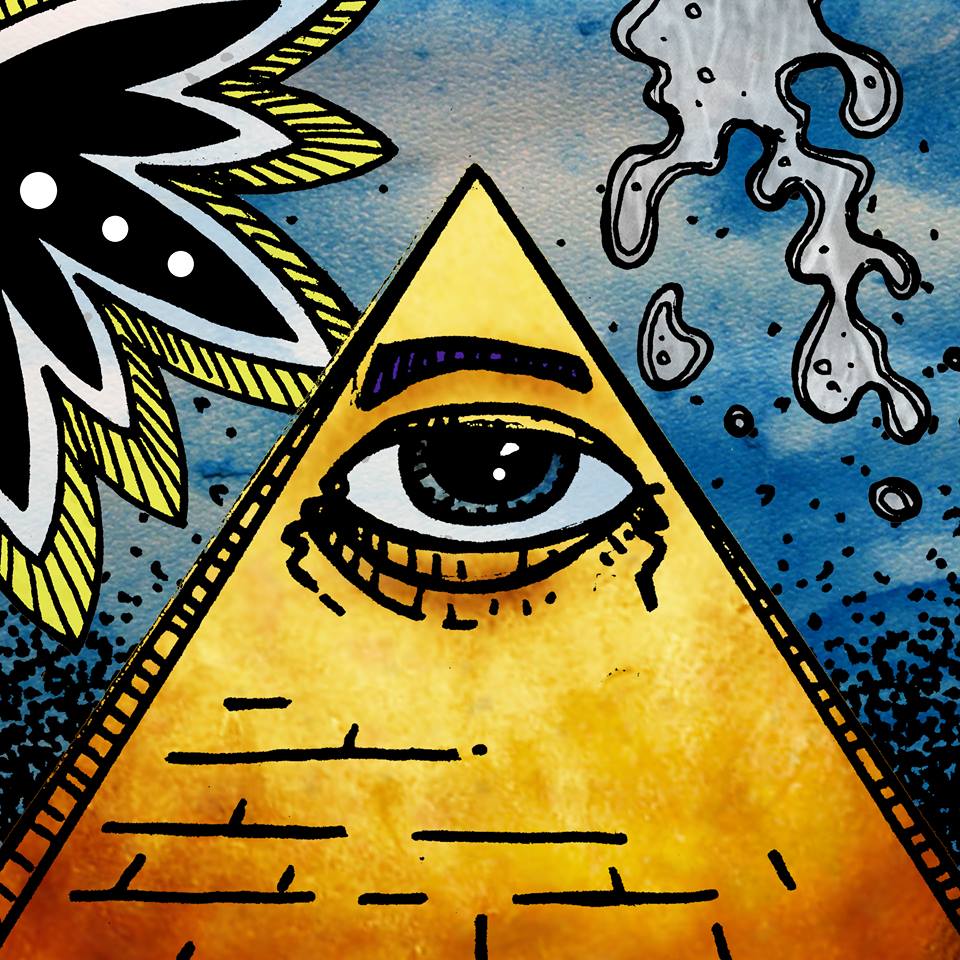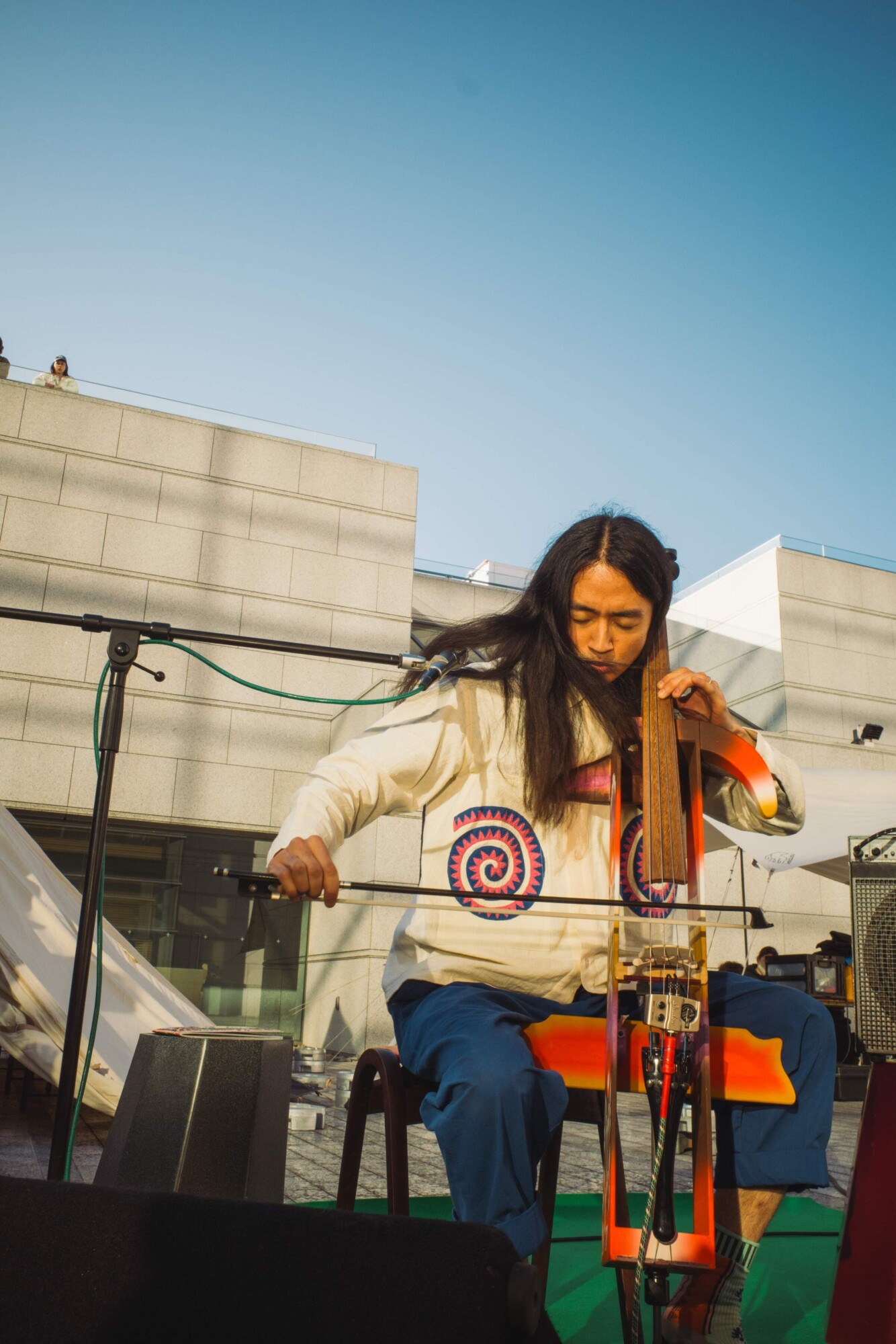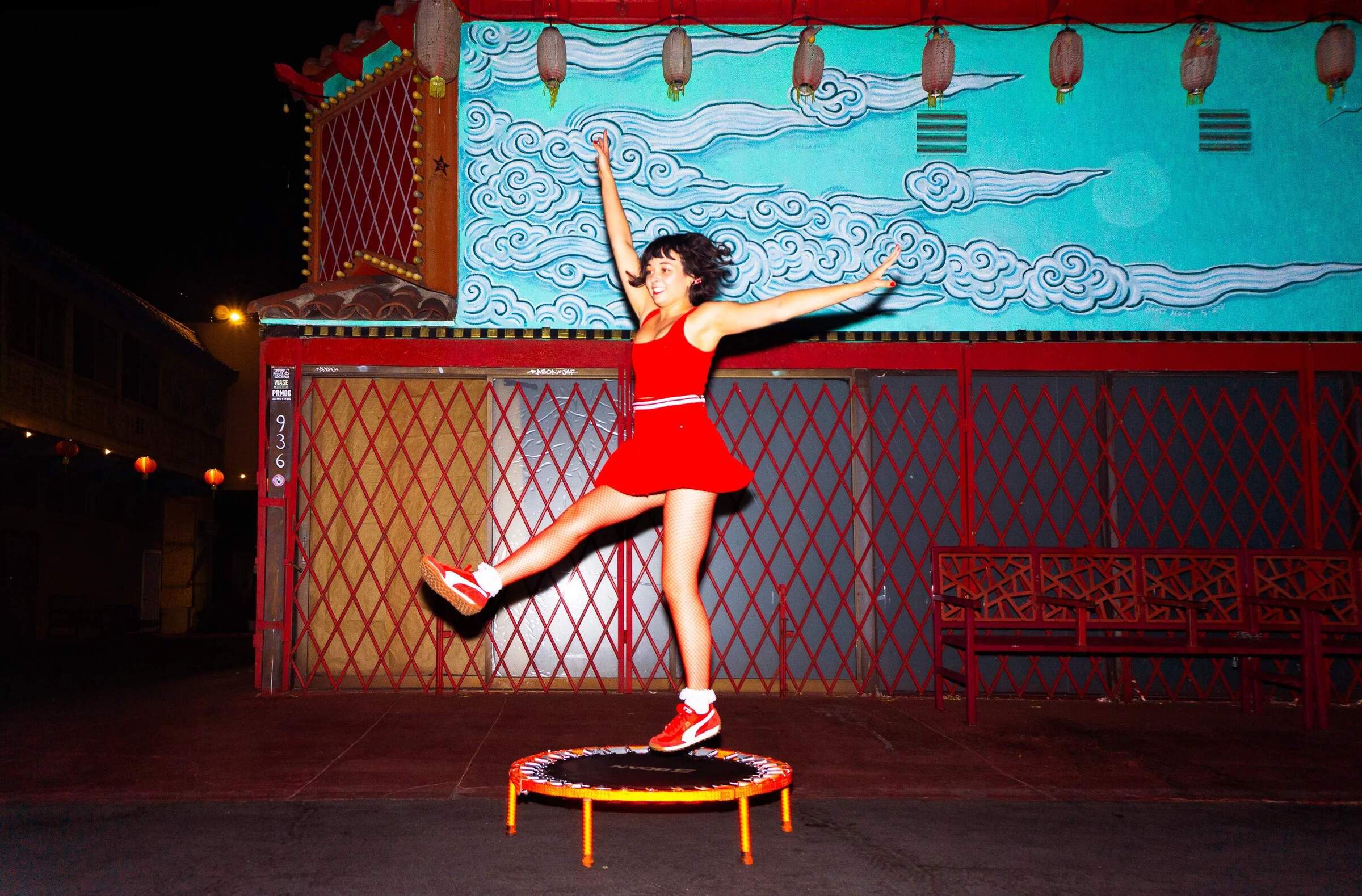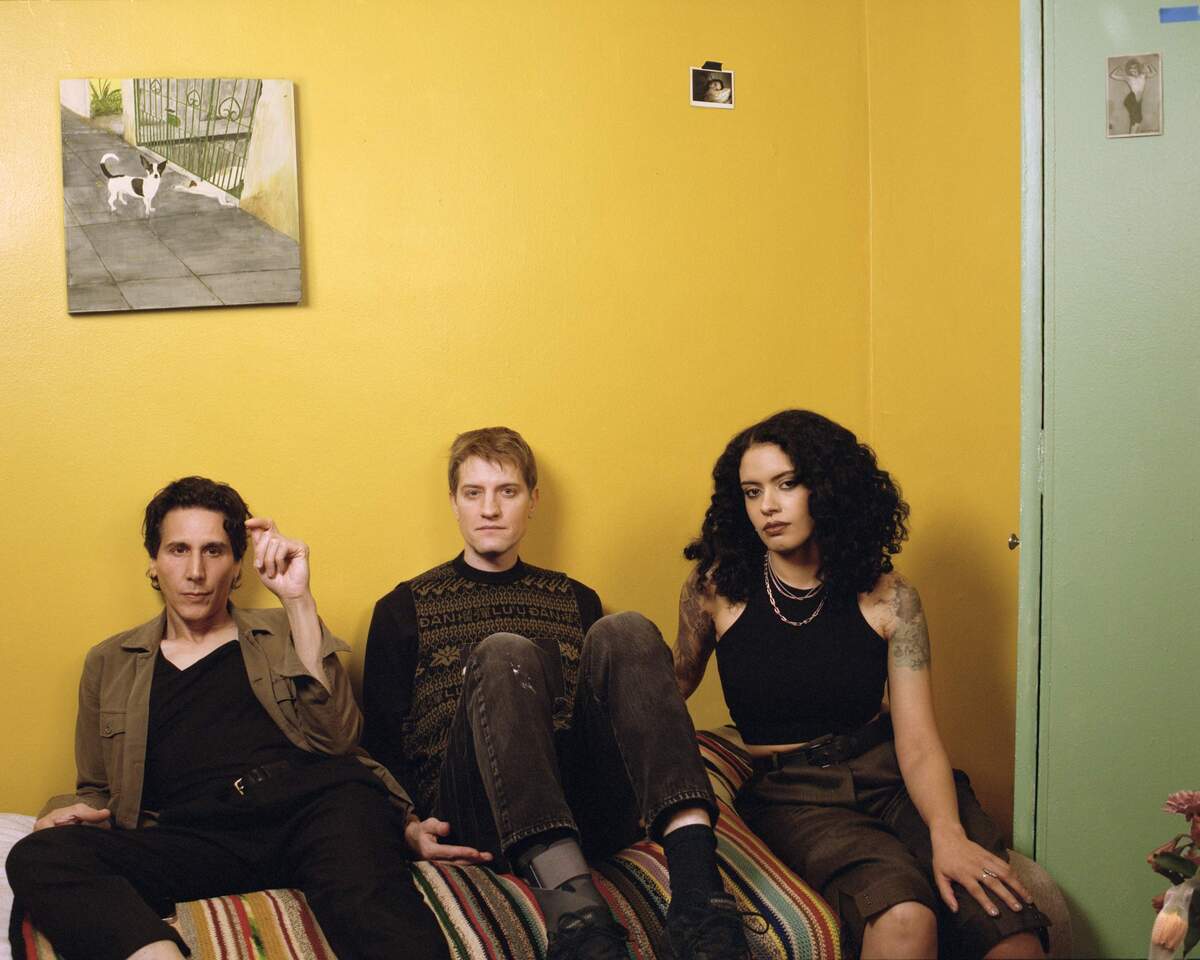Inside the Dreamworld of Tomo Katsurada: An Interview on Sound, Space, and Starting Fresh
Tomo Katsurada’s new EP ‘Dream of the Egg’ feels like cracking open a quiet little universe. Soft, warm, and totally his own.
After years of channeling swirling psych energy with Kikagaku Moyo, Tomo’s solo work slows things down, trading fuzzed out jams for something more personal and tender. It’s all about touch, feeling, and memory. Each sound seems to float, shaped more by emotion than effects pedals or studio tricks.
These days, Tomo’s not just making dreamy records. He and his partner Eloïse Ptito also opened Future Days Shop in Amsterdam, a cozy creative space where music, handmade clothes, and art all live together. In the back, there’s even a studio where embroidery workshops and textile experiments happen. It’s a vibe. Thoughtful, beautiful, and totally hand crafted.
With ‘Dream of the Egg,’ Tomo invites us into a softer, more introspective headspace. It feels like stepping into a dream you don’t want to wake up from, and he’s right there guiding the way.
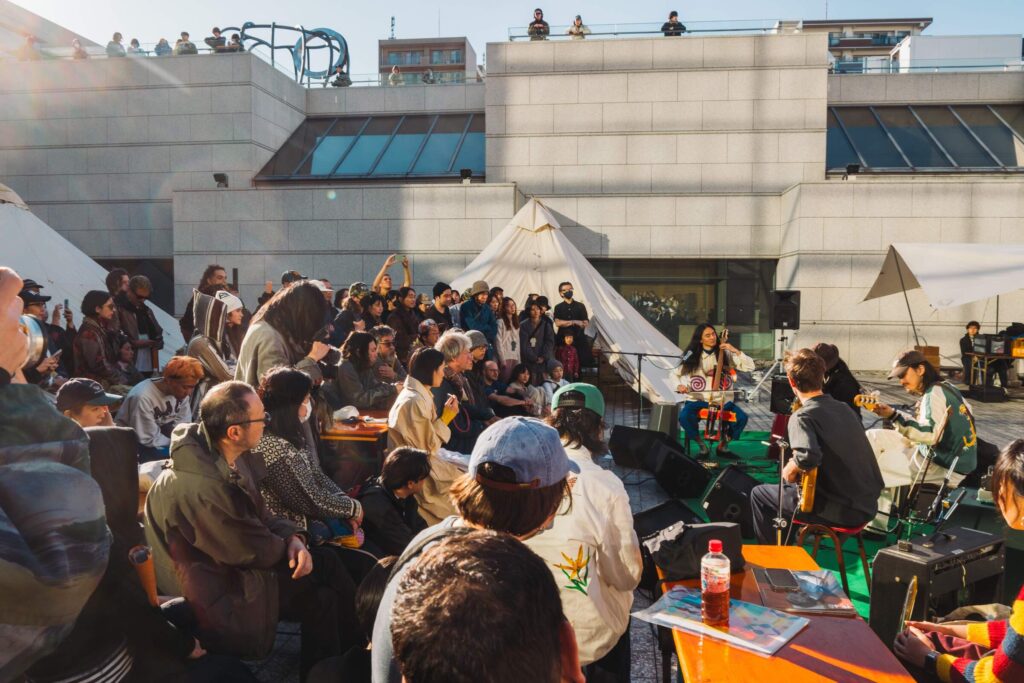
“I’m not just inspired by sound itself, but by the world a song or visual can create.”
“Dream of the Egg” is such a cool concept, especially blending music with a 1920s Japanese children’s book. What was it about Yume No Tamago that made you want to turn it into an album?
Tomo Katsurada: Yume No Tamago is a piece of Japanese children’s literature from the 1920s, carrying a timeless message: “Don’t rush to hatch an egg, or you might find there’s nothing inside.” It’s a poetic lesson in patience — a reminder that dreams take time to grow. What struck me was how deeply relevant that idea still feels today, especially in contrast to the fast-paced, hyper-consumptive rhythm of modern life. The story resonated with me, and it felt natural to express that message through music — something that invites people to slow down, reflect, and listen deeply.
You mentioned working with whatever materials you had around while making the album. How did that “anything goes” approach affect the sound of the record?
That approach brought a raw and natural essence to the record. Working within physical limitations — using whatever was around me at the time — created a kind of hand-crafted feel. The imperfections and textures that emerged added warmth and comfort between the layers of sound. It became less about precision and more about presence. I think that’s what gives the album its intimate atmosphere.
The track ‘Zen Bungalow’ is such a beautiful reimagining of Gabriel Yared’s song. What’s the story behind how that cover came to be, and what made you want to take it in your direction?
Thank you! I was honored when Gabriel Yared left me a message saying he loved my interpretation of the track. I had reached out to him to ask for permission to cover it, and his response meant a lot. The original piece is actually my partner’s favorite song to listen to every morning, so over time, it naturally became part of my emotional landscape too. There are two different versions of the track, and one night, I had a dream where both versions blended into a new, hybrid song. I woke up with that dream still in my mind, and it inspired me to create ‘Zen Bungalow’ — a new arrangement based on that imagined version.
Jonny Nash’s guitar work really adds something special on the opening and closing tracks. How did you guys work together on those? Was there a certain chemistry between you two in the studio?
I’ve been a longtime fan of both Jonny’s solo records and his project, Gaussian Curve. In fact, their live show was the first concert I saw after moving to Amsterdam from Tokyo — and I was immediately mesmerized by his sound. Around that time, I had the initial idea for the track Moshimo, and I dreamt of having Jonny play guitar on it. So it truly felt like a dream come true when it actually happened. There was a natural chemistry between us — not just musically, but as friends too. We spent a lot of afternoons hanging out in Amsterdam during my Kikagaku Moyo touring days, drinking coffee and sharing stories. While musical chemistry is important, I think human chemistry is even more essential when it comes to performing together. We’re actually going on tour together this year, and I’m really looking forward to that.
The picture book that goes along with the album looks amazing. How did you end up working with Shoko Otake on the artwork, and how did the visuals shape the way you thought about the music?
I discovered Shoko’s work during the final year of Kikagaku Moyo, and she created a beautiful piece for our last poster exhibition. I was really drawn to her visual language — it felt like the right match for this project. We started by sharing ideas and talking a lot about how to shape this world together. There was a lot of back-and-forth, and a lot of passion on both sides. It was the first time either of us worked on a project that integrated artwork, story, and music so tightly. I’m really proud of what we created. Big thanks to Terry Bleu, the bookstore in Amsterdam, who helped bring this physical dream book to life with such beautiful quality.
This is the first of five albums you’re working on, each tied to a different picture book. What’s the bigger picture here? What do you want listeners to take away from this project as a whole?
I’ve always imagined creating something like a new kind of opera — a live experience that blends storytelling, visuals, and music in a unique and eccentric way. This picture book series is gradually building towards that vision, and once the series is complete, I’d love to bring it all together into one immersive performance.
You’ve spent time in Japan and Amsterdam—how do these two places influence your music? Do you feel like your surroundings shape the way you write and create?
Absolutely. I’ve been living in Amsterdam for seven years now, and both Japan and the Netherlands have shaped me in different but deeply meaningful ways. Growing up in a rainy region of Japan, I’ve never been too affected by gloomy weather. So, the long, dark winters in Amsterdam actually work in my favor. They give me time to slow down, stay inside, and focus on writing and creating. My partner and I also run a creative space here called Future Days Shop, which has become a hub for ideas, collaboration, and cultural exchange. Inspiration flows through the space every day — it’s truly become part of our daily life. What I really love about Amsterdam is its openness. There’s room for people from all backgrounds to do things that feel personal and expressive. Since opening the shop, I’ve felt more rooted — like my partner and I finally have a physical space to share our world with others. That sense of creative freedom has definitely fed into my music.
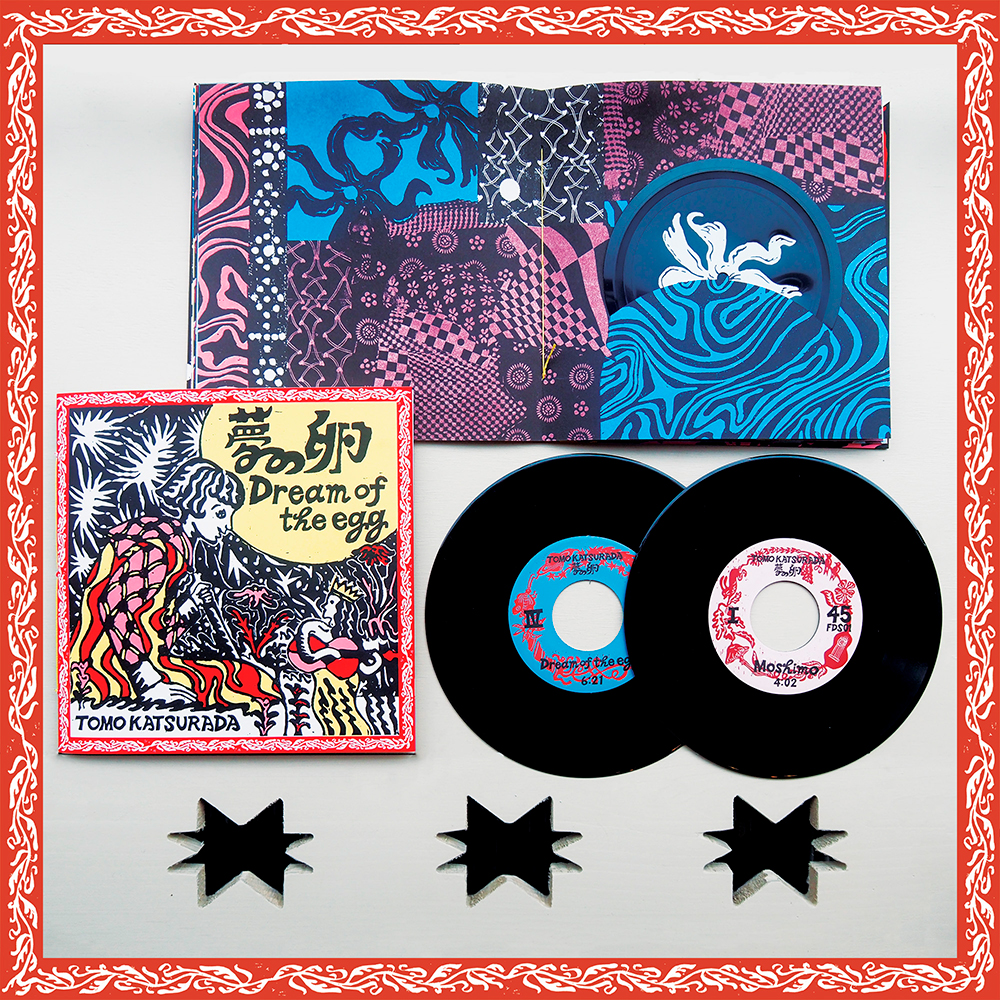
“My biggest dream is to make a film that beautifully weaves together music, visuals, and eccentric storytelling.”
Since you’re into both visual art and music, do you find one feeds into the other for you? Does creating visuals influence your music, or is it the other way around?
They definitely feed into each other in my mind. I love the magical reaction that happens when music and visuals interact. When it comes to the visual side, I’m usually involved in the art direction — shaping the overall vision of a project from a storytelling perspective. I often co-create this part with my partner, who brings her own unique perspective into the process. My biggest dream is to make a film that beautifully weaves together music, visuals, and eccentric storytelling — something rich and sonic yet playful. I see myself on a journey toward filmmaking, and that’s ultimately what I’d love to do. Until I reach that point, I want to fully enjoy the process of getting there by learning through each project, experimenting, and letting the ideas evolve naturally. I’m fascinated by how music and image can amplify one another emotionally. It’s a relationship I’m exploring little by little, and I’m excited to see how far it can go.
Kumoyo Island had that whole imaginary world vibe going on during the pandemic. How did that time and place in your mind shape the music you made, both with Kikagaku Moyo and now as a solo artist?
That period gave me the space to sit still and really reconnect with my surroundings and with myself. I began to reflect on how I wanted to live, not just how I wanted to make music. During the pandemic, I moved into a new apartment with my partner, and that space became my creative sanctuary. After years of touring and pouring so many ideas into the band, I felt like my personal creative room was left kind of empty. But as I started writing again, that room — both physically and mentally — began to fill up with something that felt truly mine. That was when I realized: making music for myself is a completely different experience. It’s more intimate, more honest, more reflective of my personal journey. The pandemic made that shift possible. It helped me understand that without emotional nourishment, making music isn’t fulfilling. My solo work comes from a very internal place, while the band was more about shared energy and community.
You’ve got a background in film and media. How does that influence the way you approach making music? Are there any filmmakers or artists whose work really inspires you?
My background in film and media definitely plays a huge role in how I think about music. I’m not just inspired by sound itself, but by the world a song or visual can create. Three artists who’ve really shaped my thinking are Tadanori Yokoo, Alejandro Jodorowsky, and John Waters. Their works are bold, emotional, eccentric, and always grounded in a clear vision of life and art. I’ve never met them, but their wisdom and creative philosophy left a lasting mark on me. Especially Yokoo; the way he sees creation, and how he fuses visual and musical worlds, continues to be a major influence on how I approach my own projects.
‘Dream of the Egg’ blends all these different styles like folk, ambient, and psychedelic. How do you keep it all feeling cohesive while mixing up so many different sounds?
I think the key to cohesion — even when mixing genres — is to leave your personal fingerprint on everything. I listen to a wide range of music, and I enjoy jumping between sounds and styles, but I always try to keep a consistent emotional thread running through it all. Rather than focusing on genre rules, I focus on feeling. I let intuition guide how I layer the sounds. That’s what helps it all feel like one world, even if the sonic palette shifts. If your emotional center stays intact, the music will naturally hold together.
Kikagaku Moyo has such a distinct sound. How does your solo work differ from that? How do you feel your music has changed since the band days?
I was deeply involved in the sound production of Kikagaku Moyo, so it makes sense that some of that DNA carries over into my solo work. But the biggest difference is that now, it’s just my palette — only the colors I choose to paint with.
With the band, the music was shaped by a collective dynamic. We were always building something together. In my solo work, I have more space to express personal emotions and ideas, so even if the sound textures might feel familiar, the intention and atmosphere are different. It’s more introspective, more delicate in some ways… and entirely mine.
The album has this dreamy, ethereal feel to it. How do you capture that kind of vibe in your music? Is it about the instruments, the space, or just the way you’re playing with sound?
For me, that dreamy quality comes from a combination of emotion, touch, and atmosphere. I try to put as much of my personal feeling as possible into each instrument I play. The way I touch the instrument — the softness, the pauses, the tension — becomes the most important sound effect, even more than any pedal or gear.
I don’t have much knowledge about recording equipment. My recording setup is pretty simple, and I don’t focus much on technical stuff. But still, something special happens when I play from a deeply emotional place.
I think my childhood memories influence that too. I grew up in a hot spring town in Japan, where I experienced beautiful echoes and warmth surrounded by winter cold. That contrast — between warmth and chill, softness and silence — is something I feel deeply in my body. And I think that physical memory naturally finds its way into the music.
Your solo music feels very personal. How important is it for you to be vulnerable in your songs? Does that sense of personal expression come naturally, or is it something you have to work at?
I’m glad to hear it feels personal because it is. This EP reflects my dreams, my feelings, and my love. When I’m in my creative space, I try to return to a childlike state — to be open, curious, and honest. That’s not easy as you grow older and accumulate more life experiences, but for me, staying pure and authentic is essential for making meaningful music.
One of my favorite quotes is from Tadanori Yokoo: “Train yourself to be a child.” I really relate to that idea. It means unlearning expectations and reconnecting with instinct — being brave enough to be vulnerable.
In a band, there isn’t always room to be completely exposed — it’s more about collective energy. But in my solo work, I can fully be myself. That feeling like you’re six years old, obsessed with what you’re making — that’s the ultimate psychedelic state to me. It’s something no AI can replicate. It’s pure human emotion, and I treasure that.
You’re about to hit the road for a tour. How are you planning to bring the intimate vibe of Dream of the Egg to the stage? Any surprises in store for the fans?
We debuted our live show in Tokyo at the Contemporary Museum during the International Art Book Fair. It was the perfect setting — the book and the music were presented together as one cohesive world.
For the live set, I’m joined by Kotsuguy (KM bassist) and Jonny Nash. We focused on creating an intimate and honest atmosphere on stage. There’s a lot of improvisation woven into the songs, and we perform the record in sequence so that the story unfolds through the music, just as it does in the book.
Our goal is to guide the audience through a dream, to offer a visual and emotional narrative through sound. If we can achieve that, I’ll feel the performance has truly done its job. It would be wonderful for the audience to witness the emotional interplay between each of us on stage.
I’m also excited for our upcoming tour in June, beautifully coordinated by my dear agent Kirmes. We’ll be traveling by train from Amsterdam, and most of the shows will take place in churches and unique art spaces — venues I’ve never played in before. I’m curious to see how our live sound resonates with these special environments.
You opened Future Days Shop in Amsterdam. What’s that space about, and how does it tie into your creative vision? What kind of community do you want to build there?
Yes! Future Days Shop is a concept store and workshop space in Amsterdam dedicated to clothing, art, and music. My partner, Eloïse Ptito, and I started it as a place to share the things we love, such as handmade works, music releases, and collaborations with artists and designers who are redefining the language of craft.
At the back of the shop is Inner World Studio, where Eloïse hosts embroidery and textile workshops, sometimes inviting guest teachers as well. It’s a space for creativity, learning, and cultural exchange.
What we’re trying to build is a community that values individuality, color, and hand-crafted expression — a kind of borderless culture that blends our roots and backgrounds into something new. It’s a deeply personal project for both of us, and we hope it can inspire others to explore their own creativity too.
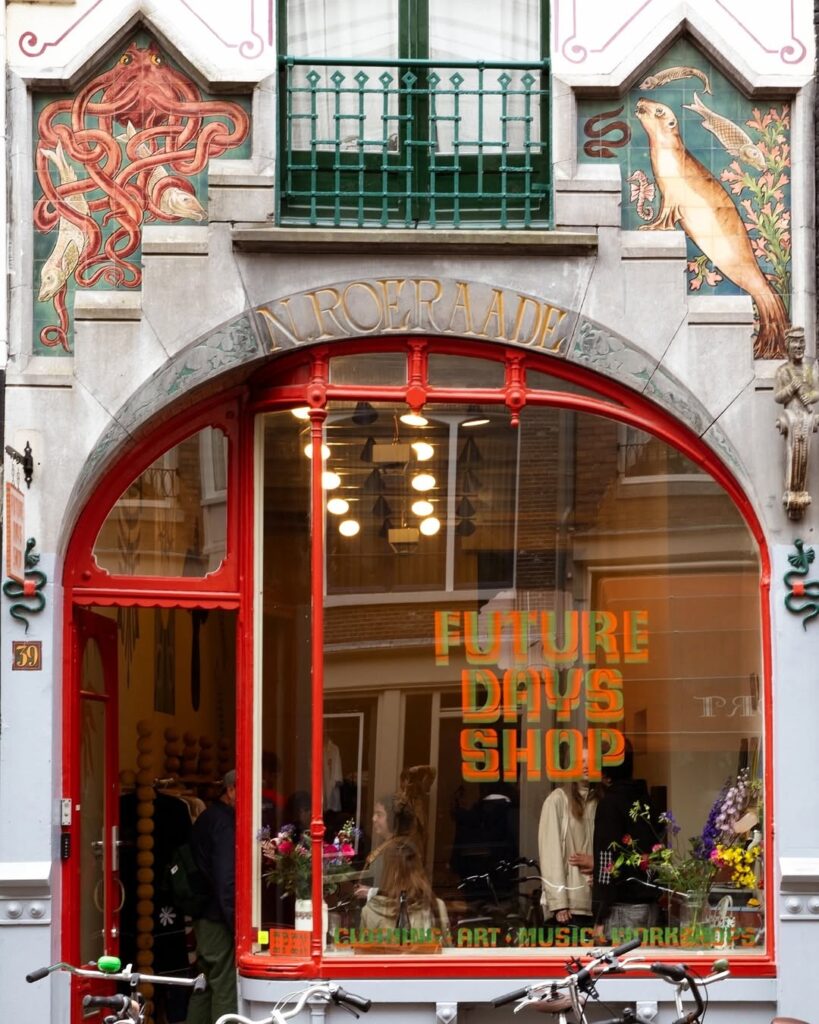
You’ve also been a big part of Guruguru Brain. As an artist and label founder, what’s your role in helping new talent grow, and how do you balance being an artist yourself with the label side of things?
I actually left Guruguru Brain at the end of 2023. It had been almost a decade since Go and I started the label together in Tokyo back in 2013. My final project there was releasing Maya Ongaku’s debut album and helping them tour in Europe — a project I’m really proud of. I’m excited to see where their journey takes them.
At the label, my role was mostly in creative direction — from visual concepts to discovering and supporting new artists. The decision to leave was about making space to focus on my own work.
Since I’ve been an artist myself on the label, I’ve come to understand both sides of the artist–label relationship. I think that perspective is incredibly important. Even releasing something small, like a cassette, can teach you so much about the full ecosystem of music. That experience gave me a deeper understanding of how to build respectful and collaborative relationships.
Balancing creation and curation expanded my view of what’s possible in music. It taught me how to support others while still staying true to my own path.
Touring and being constantly on the move can be pretty draining. How do you stay grounded when you’re away from home? What does “home” look like for you these days?
When I was touring constantly, I was 120% excited about every show — I truly loved it. I poured all my energy and focus into each performance. As a psychedelic rock band, I believed that kind of intensity and full commitment was essential to delivering something powerful and pure to the audience.
But over time, I started to feel my creative energy become depleted. I found myself missing the feeling of simply having a place to be.
Now, home has become a creative space and a sanctuary where I can refuel and rediscover myself. Since moving into our new home, I’ve been slowly filling it with colors, textures, and objects that reflect who I am. It’s become a place where ideas grow naturally.
Touring was beautiful, but now I value balance — time to ground myself, make new work, and rebuild the personal universe that fuels my music.
Your music often explores deep emotions and spiritual themes. How do you stay connected to that side of yourself, especially with everything going on in the world?
I truly believe that music — and art in general — has the power to bring people together. During the Kikagaku Moyo years, I saw audiences from all kinds of backgrounds connect through the shows. Hippies, punks, conservatives, progressives — all standing in the same space, sharing the same sound. That experience gave me a new perspective on how powerful and peaceful art can be.
Creating music is, for me, a deeply spiritual act. It’s a form of listening — not just to the world, but to my body and intuition. Especially in chaotic times, staying connected to that inner voice helps me stay grounded. I trust that making something sincere, something that resonates emotionally, is a kind of resistance. A soft power that brings people together.
Looking at your path as both a band leader and now a solo artist, what’s the biggest thing you’ve learned about finding the balance between working with others and expressing yourself as an individual?
Being part of a band and working solo have taught me very different lessons, but both have been equally important. In a band, you learn to share, compromise, manage responsibilities, and to respect the creative energy of others. As a solo artist, you confront yourself more directly. There’s nowhere to hide, which is both freeing and vulnerable.
What I’ve learned most is the value of authenticity. Whether I’m collaborating or working alone, I try to stay attuned to what’s true to me, for the people around me, and for the work itself. During the Guruguru Brain years, I learned how to spot that authenticity in others too. It’s what I look for in artists and what I try to protect in my own work.
Authenticity, to me, is the soul of art. It’s the one thing that can’t be faked and can’t be replicated. It’s what I hope to carry with me, no matter what form the project takes.
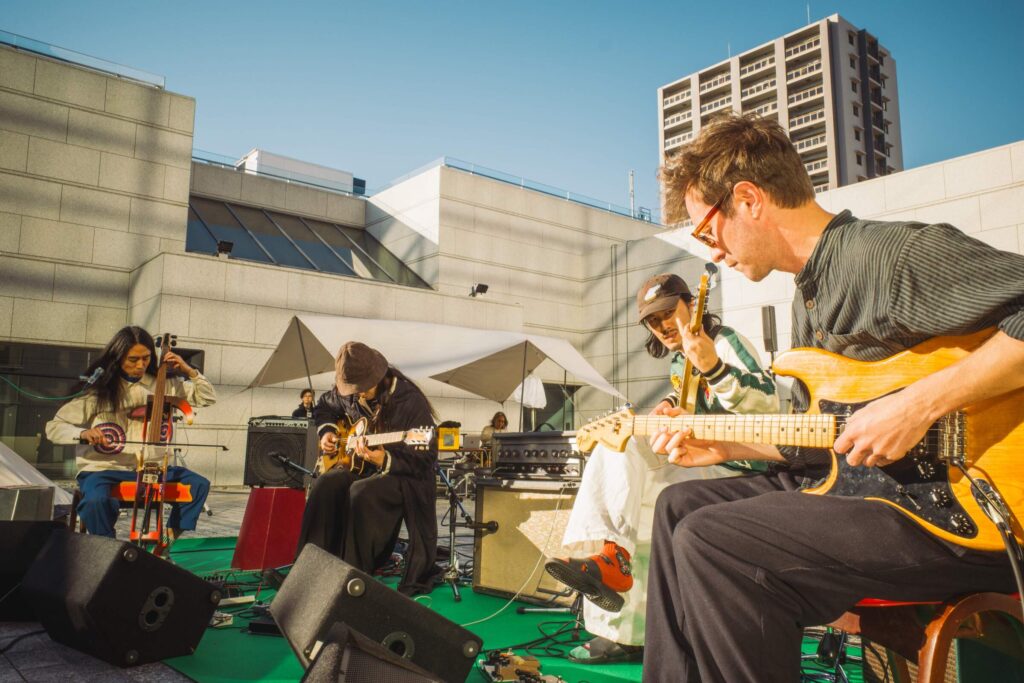
Oh, and before we go, what’s on your turntable? What are you reading…
Lately, I’ve been really into some dub versions of 70s John Martyn tracks that I discovered on 7-inch and 12-inch singles. Hearing how Lee “Scratch” Perry approached Martyn’s songwriting gave it a whole new psychedelic dimension — I found it so inspiring. It made me go back and revisit his album ‘One World,’ which ends with the breathtaking track ‘Small Hours.’
Here are a couple links if you haven’t listened to them yet:
‘Big Muff’ – John Martyn Dub Version (Lee Perry)
‘Small Hours’ – John Martyn
I’ve been revisiting one of my favorite books: The Practice of Becoming a Fool: A Collection of Words by Tadanori Yokoo.
I’m currently working on a collaborative album with Estonian musician Misha Panfilov, and April always feels like the perfect season to give birth to new creations.
Yokoo’s words really resonate with me — this book has become something I love to open at the start of any creative process. It’s only available in Japanese for now, but I hope it will be translated into other languages in the future.
Tomo Katsurada | Photo by Jamie Wdziekonski
Tomo Katsurada Website / Instagram
Future Days Shop Instagram / YouTube
Kikagaku Moyo interview with Go Kurosawa
